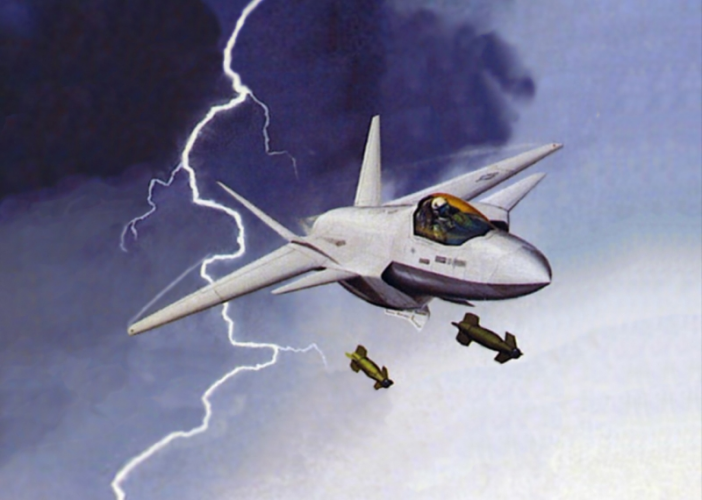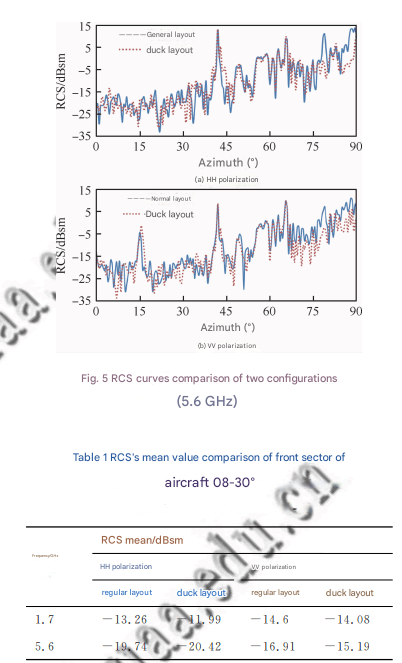what's this?!
You are using an out of date browser. It may not display this or other websites correctly.
You should upgrade or use an alternative browser.
You should upgrade or use an alternative browser.
Are canards bad for stealth? - An Endless Discussion
- Thread starter Deino
- Start date
siegecrossbow
I really should change my personal text
- Joined
- 12 March 2012
- Messages
- 707
- Reaction score
- 2,106
what's this?!
what it says in the description.
Big_Zukini
ACCESS: Confidential
- Joined
- 23 November 2024
- Messages
- 164
- Reaction score
- 227
On arrival. What about stealth on departure?Because canards are up front, flashing returns all over creation. Tails are mostly masked by the wing.
Well, in an ideal world, there would be nobody left to light you up on departure.On arrival. What about stealth on departure?
Joint Soviet Fighter
ACCESS: Secret
- Joined
- 14 January 2025
- Messages
- 247
- Reaction score
- 280
siegecrossbow
I really should change my personal text
- Joined
- 12 March 2012
- Messages
- 707
- Reaction score
- 2,106
That’s just how it is translated in Chinese. Canard also means duck btw.
- Joined
- 11 March 2012
- Messages
- 3,249
- Reaction score
- 3,179
Over on the F-47 thread we have been speculating about retractable canards. Canards are most valuable during landing and take-off and steep turns. By the time you need to do steep turns, you are probably already registering on the enemy's targeting radar or IR.
The rest of the time canards are a nuisance to stealth.
It would be simplest to just lay them on the top of the main wing during cruise.
Also consider that short-coupled canards like SAAB work best when wing tip votices created by the canard influence airflow over th top of the main wing.
The rest of the time canards are a nuisance to stealth.
It would be simplest to just lay them on the top of the main wing during cruise.
Also consider that short-coupled canards like SAAB work best when wing tip votices created by the canard influence airflow over th top of the main wing.
Joint Soviet Fighter
ACCESS: Secret
- Joined
- 14 January 2025
- Messages
- 247
- Reaction score
- 280
I know. I just think that it's amusing.That’s just how it is translated in Chinese. Canard also means duck btw.
1635yankee
Recovering aeronautical engineer
- Joined
- 18 August 2020
- Messages
- 554
- Reaction score
- 766
That’s just how it is translated in Chinese. Canard also means duck btw.
It's not so much that it also means "duck"; it's the French word for "duck," and it's the source of the term used for the aircraft configuration.
- Joined
- 27 December 2005
- Messages
- 17,748
- Reaction score
- 26,408
Fixed canards would be much easier to make stealthy - no gaps and no moving about, so long as the edges are aligned to the main wing.
FlyGuy369
Flying is fantastic
- Joined
- 15 June 2023
- Messages
- 250
- Reaction score
- 672
So I was thinking about hinge point offset or even hinge redesign on this, I know you seen the one I shared in the F-47 thread and what I thought was how interesting it was that you still get effective pitch moment when you make the fuselage attachment point the hinge versus the traditional methods. I Wonder if the RCS values off of that concept are superior.Fixed canards would be much easier to make stealthy - no gaps and no moving about, so long as the edges are aligned to the main wing.
- Joined
- 24 November 2008
- Messages
- 1,549
- Reaction score
- 2,612
So I was thinking about hinge point offset or even hinge redesign on this, I know you seen the one I shared in the F-47 thread and what I thought was how interesting it was that you still get effective pitch moment when you make the fuselage attachment point the hinge versus the traditional methods. I Wonder if the RCS values off of that concept are superior.
Speaking of F-47 and hinges... I wonder if Boeing has mastered the application of flexible materials and associated RAM. I'm thinking of three-dimensional adjustable DSI-bumps, morphing wings / control surfaces, fuel tanks and the like. The two demonstrators may have helped to mature this technology. That would be a true generational leap!
FlyGuy369
Flying is fantastic
- Joined
- 15 June 2023
- Messages
- 250
- Reaction score
- 672
Only time will tell! I need them to stop teasing us and give us what we came for!Speaking of F-47 and hinges... I wonder if Boeing has mastered the application of flexible materials and associated RAM. I'm thinking of three-dimensional adjustable DSI-bumps, morphing wings / control surfaces, fuel tanks and the like. The two demonstrators may have helped to mature this technology. That would be a true generational leap!
F-14ATomcat
ACCESS: Secret
- Joined
- 26 May 2024
- Messages
- 431
- Reaction score
- 750
there are 2 main reasons canards generate a bigger RCS.
A) first is canards go to a higher AoA than the main wing to produce lift.
Here it is obvious why they are not stealthy any deflection specially big ones create a bigger RCS signature in example this Gripen

here at take off the Rafale sets the canards at much higher AOA than the main wing but also are higher surface to be deflected generating an extra surface beside the main wings for radar deflection

So here we can see deflection is a must since canards main function is go higher AoA than the main wing to generate a high pitch moment.
B) The other is to generate vortices the canards need to be ideally at above wing level to generate the highest lift at high AoA

and here is why the F-22 does not use canards



The horizontal tails are well Hidden by the main wing add the TVC nozzles and you can see, that it is far more discrete than a fighter with canards.
Why F-47 does use canards? if it does use them. well simple, performance, canards are pitch control devices that free the trailing edge main wing flaps and ailerons to be used for roll and higher lift generation , and very likely on a fighter without vertical fins as yaw devices with split flaps
A) first is canards go to a higher AoA than the main wing to produce lift.
Here it is obvious why they are not stealthy any deflection specially big ones create a bigger RCS signature in example this Gripen
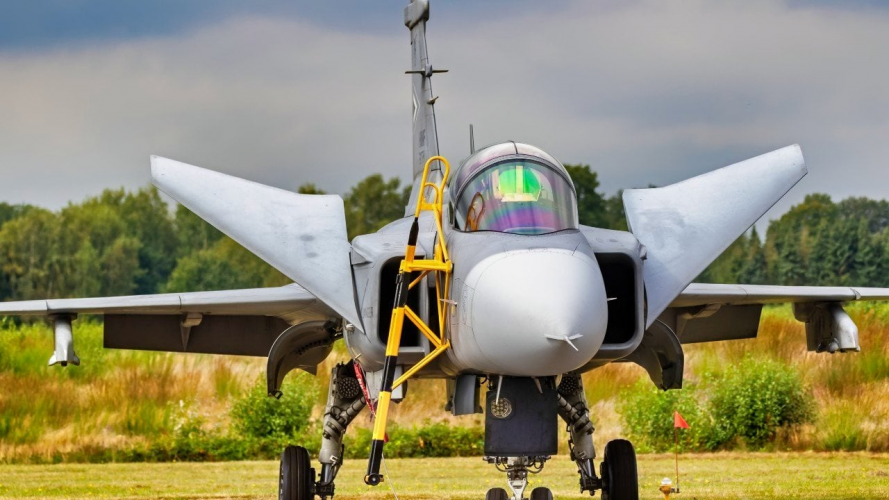
here at take off the Rafale sets the canards at much higher AOA than the main wing but also are higher surface to be deflected generating an extra surface beside the main wings for radar deflection
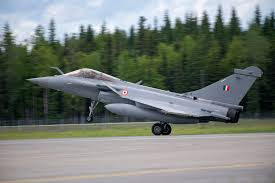
So here we can see deflection is a must since canards main function is go higher AoA than the main wing to generate a high pitch moment.
B) The other is to generate vortices the canards need to be ideally at above wing level to generate the highest lift at high AoA

and here is why the F-22 does not use canards
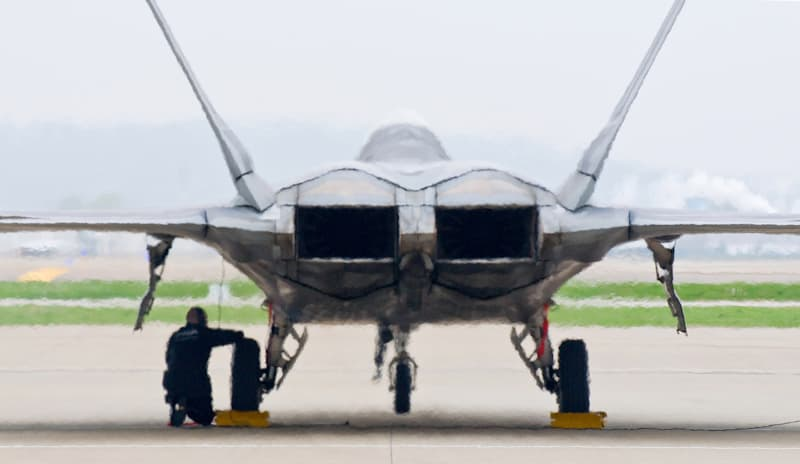
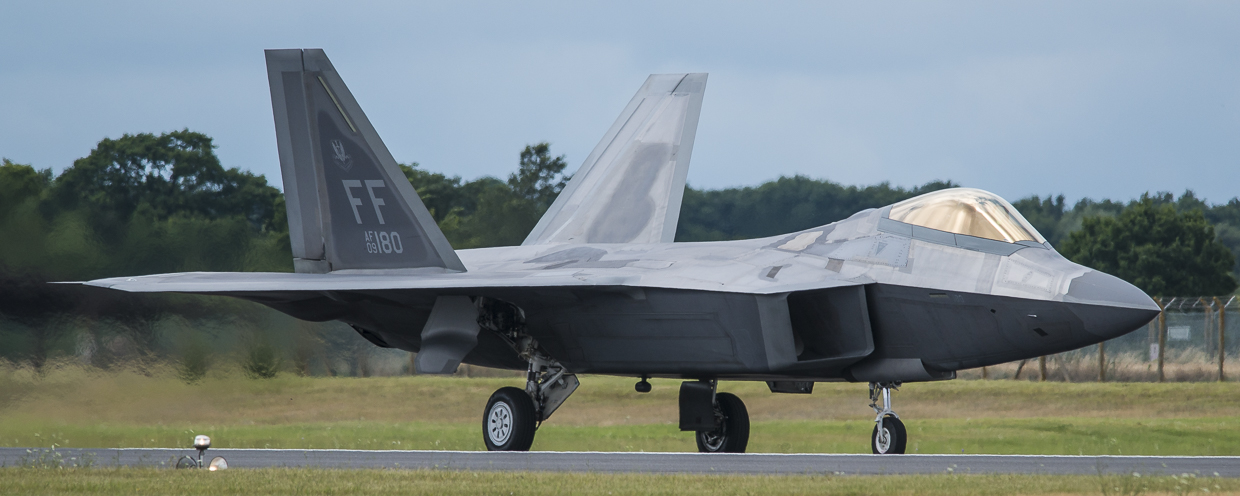
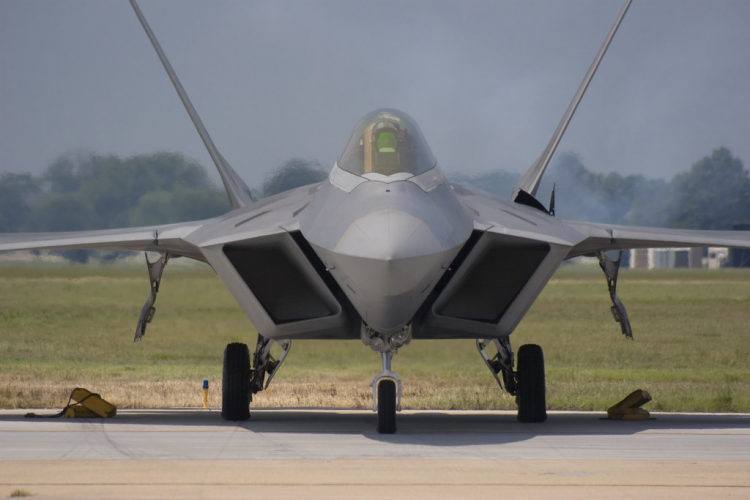
The horizontal tails are well Hidden by the main wing add the TVC nozzles and you can see, that it is far more discrete than a fighter with canards.
Why F-47 does use canards? if it does use them. well simple, performance, canards are pitch control devices that free the trailing edge main wing flaps and ailerons to be used for roll and higher lift generation , and very likely on a fighter without vertical fins as yaw devices with split flaps
Last edited:
F-14ATomcat
ACCESS: Secret
- Joined
- 26 May 2024
- Messages
- 431
- Reaction score
- 750
A lot is propaganda, any material will absorb, reflect and diffract electromagnetic waves, no matter how much propaganda they use, aircraft are made of different materials that behave different to different radar frequencies.Speaking of F-47 and hinges... I wonder if Boeing has mastered the application of flexible materials and associated RAM. I'm thinking of three-dimensional adjustable DSI-bumps, morphing wings / control surfaces, fuel tanks and the like. The two demonstrators may have helped to mature this technology. That would be a true generational leap!
What they do is propaganda to buy weapons, in general rule any advancement in stealth is countered with better radars, stealth helps but also degrades performance because the less deflecting surfaces and radar wave reflecting surfaces the less control the aircraft has.
Flatter surfaces also generate less aerodynamic surfaces, since they generate less uniform Cross section, in example which aircraft flies better IAI Kfir or Mirage III? which is more agile Su-30MKI or F-106? less control devices less agility but better stealth, in reality you lose if you gain something.
As speed increases vertical surfaces are needed, Chines can help stability like the SR-71 and YF-12
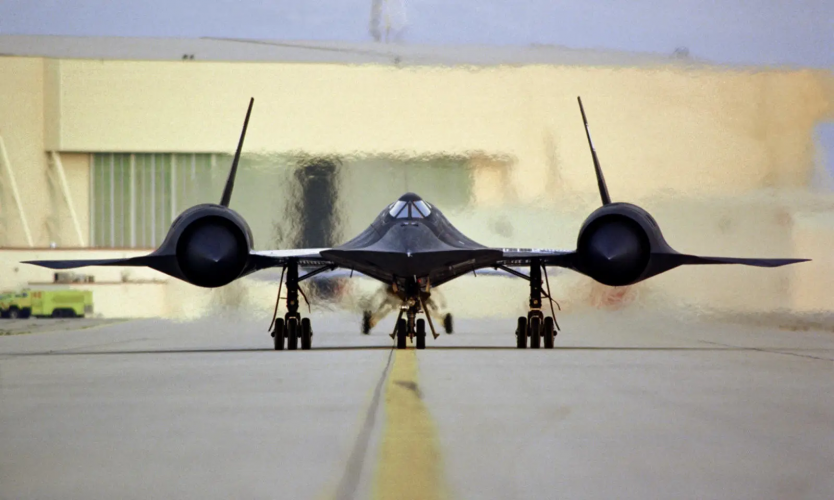
Chines helped SR-71 to get rid of ventral fins since YF-12 had ventral fins
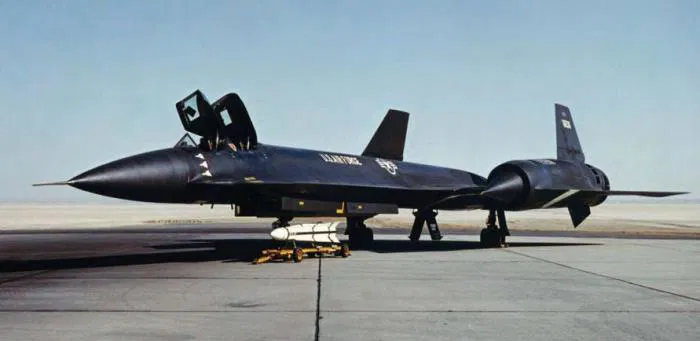
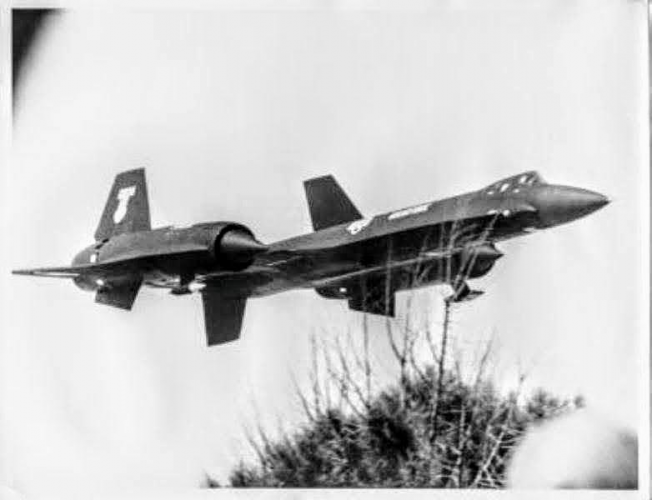
Last edited:
- Joined
- 24 November 2008
- Messages
- 1,549
- Reaction score
- 2,612
A lot is propaganda, any material will absorb, reflect and diffract electromagnetic waves, no matter how much propaganda they use, aircraft are made of different materials that behave different to different radar frequencies.
What they do is propaganda to buy weapons, in general rule any advancement in stealth is countered with better radars, stealth helps but also degrades performance because the less deflecting surfaces and radar wave reflecting surfaces the less control the aircraft has.
Flatter surfaces also generate less aerodynamic surfaces, since they generate less uniform Cross section, in example which aircraft flies better IAI Kfir or Mirage III? which is more agile Su-30MKI or F-106? less control devices less agility but better stealth, in reality you lose if you gain something.
As speed increases vertical surfaces are needed, Chines can help stability like the SR-71 and YF-12
Chines helped SR-71 to get rid of ventral fins since YF-12 had ventral fins
Ok, whatever... Your general rant against "whatever you are upset with" has nothing to do with what I was referring to in my post. Cheers!
- Joined
- 11 February 2007
- Messages
- 2,565
- Reaction score
- 4,362
If you're generating a high rate turn then detection is probably no longer an issue. You're either engaging, disengaging, or being engaged.So here we can see deflection is a must since canards main function is go higher AoA than the main wing to generate a high pitch moment.
B) The other is to generate vortices the canards need to be ideally at above wing level to generate the highest lift at high AoA
The actual function of canards for the vast majority of flight time is to dynamically stabilise an unstable aircraft. They don't need a huge deflection to achieve this, just rapid response. The high deflection on take-off is a complete straw-man for this discussion.
And of course there's the close-coupled vs long-coupled distinction to consider.
- Joined
- 3 June 2011
- Messages
- 18,335
- Reaction score
- 12,234
As speed increases vertical surfaces are needed, Chines can help stability like the SR-71 and YF-12
View attachment 764831
Chines helped SR-71 to get rid of ventral fins since YF-12 had ventral fins
View attachment 764832
View attachment 764833
That's never made any sense. The chines don't act in the horizontal plane. The reason for the ventral tails is to counteract the huge radome up front. The trainers have small ventrals to counter the effect of the stepped aft cockpit for the same reason. If you add side area up front you need to add area aft to maintain your stability in that plane.
F-14ATomcat
ACCESS: Secret
- Joined
- 26 May 2024
- Messages
- 431
- Reaction score
- 750
the canard needs a position is not luck but physics, the ideal canard is not coplanar with the main wing, Rafale is the ideal example, same IAI lavi, the F-22 offers a more realistic solution, but here you have to distinguish an important reason, canards are not good for stealth, but for lift, but designs need to compromise, compromise means the aircraft design team consider pros and cons, then they balance the solution.If you're generating a high rate turn then detection is probably no longer an issue. You're either engaging, disengaging, or being engaged.
The actual function of canards for the vast majority of flight time is to dynamically stabilise an unstable aircraft. They don't need a huge deflection to achieve this, just rapid response. The high deflection on take-off is a complete straw-man for this discussion.
And of course there's the close-coupled vs long-coupled distinction to consider.
Best for stealth no tail, tailess is the best but not the best for lift and controllability .
example Mirage 3 is the lower RCS compared to Kfir.
But very agile aircraft are like Su-27M, you need surfaces to control an aircraft.
Ideally in my opinion the best design for stealth is like YF-23 or Su-75.
You can not blend all and have it all in life, F-22 has for a reason a horizontal tail behind the wing.
For fans their aircraft are good in everything, never accept designs have compromises, and that is what happens when people think canards are stealthy, no they are not, but the best is tailess or a well hidden horizontal tails like F-22 or just canted tails without horizontal tail as in YF-23.
Canards are more for lift and pitch controllability and they can follow some planforming but they are in reality not stealthy, but they can apply some stealth solutions
Last edited:
F-14ATomcat
ACCESS: Secret
- Joined
- 26 May 2024
- Messages
- 431
- Reaction score
- 750
a flat surface guides airflow, tails are flat surfaces so wings and chines. ventral fins are flat surfaces that also straight up the air flow, even the air intake with a tunnel like the Su-27 straight up the flow.That's never made any sense. The chines don't act in the horizontal plane. The reason for the ventral tails is to counteract the huge radome up front. The trainers have small ventrals to counter the effect of the stepped aft cockpit for the same reason. If you add side area up front you need to add area aft to maintain your stability in that plane.
The F-47 and YF-23 do have chines and these also straight up the air flow, it is not coincidence, the YF-12 lost stability because a round surface also is more turbulent, radomes of aircraft have in the radome some small straight up fences to straight up the flow.
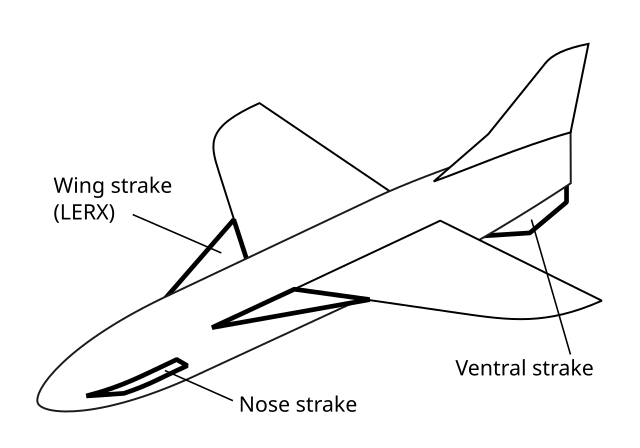
Last edited:
- Joined
- 11 February 2010
- Messages
- 1,650
- Reaction score
- 2,702
the canard needs a position is not luck but physics,
How about start the physics by providing some modeling on "How much RCS per degree" a Canard contributes. Then calculate radar detection range as a function of canard deflection ?
F-14ATomcat
ACCESS: Secret
- Joined
- 26 May 2024
- Messages
- 431
- Reaction score
- 750
How about B-2 for a proof? Tailess is the best for stealth, how about explaining why Rafale has a canard above wing level and how that will affect stealth? how about explaining why Su-57 ditched canards and went for LEVCONs, the proof is there but if you want physics well see B-2 or B-21.How about start the physics by providing some modeling on "How much RCS per degree" a Canard contributes. Then calculate radar detection range as a function of canard deflection ?
- Joined
- 11 February 2010
- Messages
- 1,650
- Reaction score
- 2,702
How about B-2 for a proof? Tailess is the best for stealth, how about explaining why Rafale has a canard above wing level and how that will affect stealth? how about explaining why Su-57 ditched canards and went for LEVCONs, the proof is there but if you want physics well see B-2 or B-21.
How about you making the model first. Like you basically paint canard to have some sort of cataclysmic effect. Like i did my own estimate using the J-20 Canard, and i would say even without RAM and canard moving, the J-20 can kill another fighter before itself being detected.
View: https://x.com/Flankerchan/status/1728242617039929735
Like the strongest canard reflection will only enter the frontal aspect when it deflected so large say in excess of 15 degrees.
View: https://x.com/i/status/1728242627752108490
This one is the data I plotted for canard deflection vs Frequency

The increase is there but if you think it's cataclysmic.. not so much. This one is the tabulated average of the data from all frequencies Vs deflection angle.
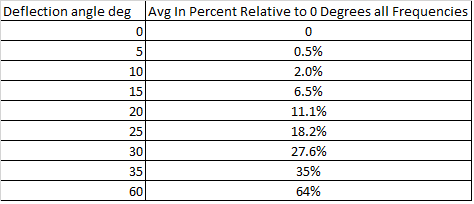
Now How much canard deflection you think is needed during air combat or flying in general ? TBH the only moment i see anything beyond 15 degrees or even 5 degrees is when the plane is about to land or takeoff.
F-14ATomcat
ACCESS: Secret
- Joined
- 26 May 2024
- Messages
- 431
- Reaction score
- 750
Look honestly I find it quite boring, these study posted in the Su-75 says allHow about you making the model first. Like you basically paint canard to have some sort of cataclysmic effect. Like i did my own estimate using the J-20 Canard, and i would say even without RAM and canard moving, the J-20 can kill another fighter before itself being detected.
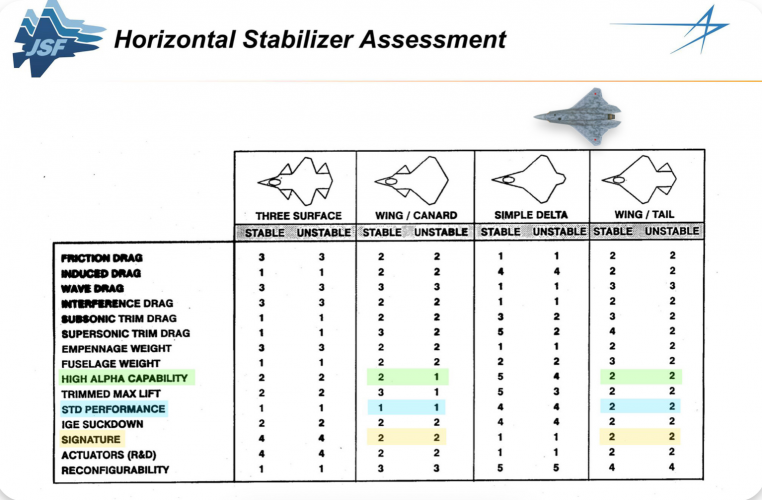
When you look for all aspect stealth a hidden tail by the wing gives you better stealth from the front like F-22, but not from the back, the rest is just try to justify a design.
On F-35 and F-22 the designers gave front lower signature priority, and J-20 gave pitch control priority.
The rest is just a long speech to justify a design, even the current European 6th generation aircraft have no canards, if F-47 has them is for pitch control, the word compromise is a reality but for fans compromise does not exist
- Joined
- 11 February 2010
- Messages
- 1,650
- Reaction score
- 2,702
Look honestly I find it quite boring, these study posted in the Su-75 says all
Too bad that every engineers and aircraft designers on the planet actually do those boring stuff to come up with that study which you showing off here.
NUMBERS MASON !!! even there are numbers there in the study. That's how you gauge how important stuff are not words "all aspect stealth" things. As the enemy is unlikely to have any control on what aspect you are presenting to it.When you look for all aspect stealth a hidden tail by the wing gives you better stealth from the front like F-22, but not from the back, the rest is just try to justify a design.
Like say that J-20 model, doing say 10 degrees and the RCS from 0.1 increased to say 2% in X-band so it's 0.102. Hostile plane can say can detect 1 sqm target at 240 km and the plane is say an 4.5 gen with RCS of 2 sqm. the J-20 Radar can detect target at 200 Km with RCS of 3 sqm. Who has the first look first shoot ? You start by using 4th root radar equation, simple one
4.5 gen detection range vs Canard plane = ((0.102/1)^(1/4))*240 = 135.6 km
J-20 Detection range vs the 4.5 = ((2/3)^(1/4))*200 =180 km
J-20 have the first-look and first shoot too likely despite having RCS penalty of 2% from 10 degrees canard deflection
The rest is just a long speech to justify a design, even the current European 6th generation aircraft have no canards, if F-47 has them is for pitch control, the word compromise is a reality but for fans compromise does not exist
and all you are doing so far are long speech, no substantial information just "canard bad". But i make my point that it's just not the cataclysmic thing you are trying to portray here. There are more reasons why not to use canard e.g flight control software, weight and volume of actuators, they are surmountable as well as RCS. You have to do trade studies to see whether the advantage worth the problem of having to make it stealth. J-20 showed Chinese designers are confident.
- Joined
- 3 June 2011
- Messages
- 18,335
- Reaction score
- 12,234
Yeah. . . that's not quite how it works. It didn't lose directional stability because the chines were cut back. It lost it because area up front was increased. The chines don't act in the same plane as the ventral tails.a flat surface guides airflow, tails are flat surfaces so wings and chines. ventral fins are flat surfaces that also straight up the air flow, even the air intake with a tunnel like the Su-27 straight up the flow.
The F-47 and YF-23 do have chines and these also straight up the air flow, it is not coincidence, the YF-12 lost stability because a round surface also is more turbulent, radomes of aircraft like ATR-72 have in the radome some small straight up fences to straight up the flow.
F-14ATomcat
ACCESS: Secret
- Joined
- 26 May 2024
- Messages
- 431
- Reaction score
- 750
cool I am not interested in long speeches, just look why Rafale has a canard above wing level and what effects has in frontal stealth, the rest I am not interested in an ego match.Too bad that every engineers and aircraft designers on the planet actually do those boring stuff to come up with that study which you showing off here.
NUMBERS MASON !!! even there are numbers there in the study. That's how you gauge how important stuff are not words "all aspect stealth" things. As the enemy is unlikely to have any control on what aspect you are presenting to it.
Like say that J-20 model, doing say 10 degrees and the RCS from 0.1 increased to say 2% in X-band so it's 0.102. Hostile plane can say can detect 1 sqm target at 240 km and the plane is say an 4.5 gen with RCS of 2 sqm. the J-20 Radar can detect target at 200 Km with RCS of 3 sqm. Who has the first look first shoot ? You start by using 4th root radar equation, simple one
4.5 gen detection range vs Canard plane = ((0.102/1)^(1/4))*240 = 135.6 km
J-20 Detection range vs the 4.5 = ((2/3)^(1/4))*200 =180 km
J-20 have the first-look and first shoot too likely despite having RCS penalty of 2% from 10 degrees canard deflection
and all you are doing so far are long speech, no substantial information just "canard bad". But i make my point that it's just not the cataclysmic thing you are trying to portray here. There are more reasons why not to use canard e.g flight control software, weight and volume of actuators, they are surmountable as well as RCS. You have to do trade studies to see whether the advantage worth the problem of having to make it stealth. J-20 showed Chinese designers are confident.
Last edited:
F-14ATomcat
ACCESS: Secret
- Joined
- 26 May 2024
- Messages
- 431
- Reaction score
- 750
Yeah. . . that's not quite how it works. It didn't lose directional stability because the chines were cut back. It lost it because area up front was increased. The chines don't act in the same plane as the ventral tails.
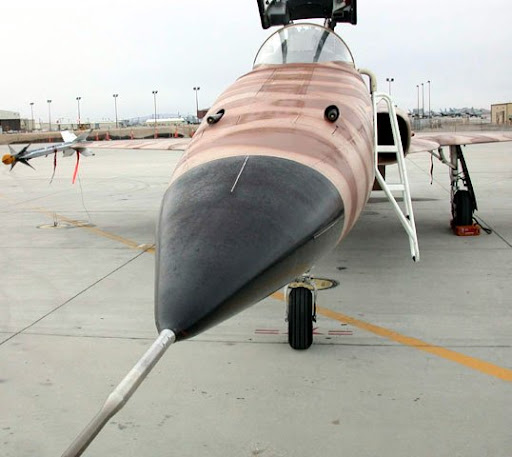
Explain me why F-5 has two types of nose radomes and what effects it has in stability the rest is up to you
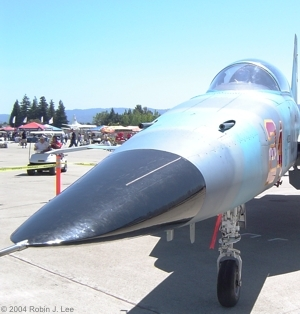
F-18 HAARV can give us a clue
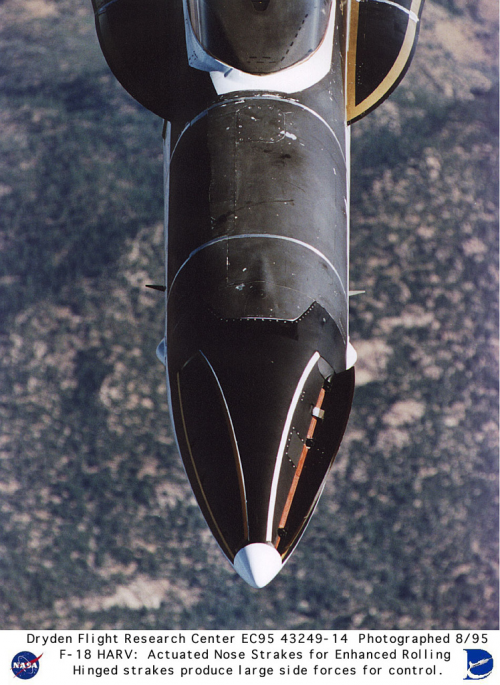
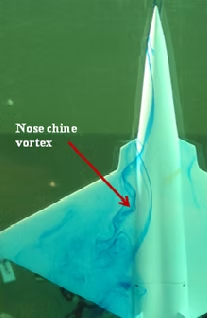
give it a read
Directional stability refers to the aircraft's ability to maintain a stable attitude in yaw or heading. The aerodynamic angle relating to yaw movement is β .
Last edited:
- Joined
- 11 February 2010
- Messages
- 1,650
- Reaction score
- 2,702
cool I am not interested in long speeches, just look why Rafale has a canard above wing level and what effects has in frontal stealth,
Well it give RCS equivalent of a clean F-16 (2.3 sqm).. isnt that good enough ? I did RCS estimates for Rafale too.
- Joined
- 3 June 2011
- Messages
- 18,335
- Reaction score
- 12,234
You'll note that those strakes are deployed one at a time and they're designed to create vortices on one side of the aircraft. Deploy them at the same time and they cancel each other out having no effect on yaw. Also they are not oriented in the horizontal plane. You're throwing a lot at the wall but don't understand what you're seeing.View attachment 764986
Explain me why F-5 has two types of nose radomes and what effects it has in stability the rest is up to you
View attachment 764987
F-18 HAARV can give us a clue
View attachment 764989
View attachment 764990
give it a read
Directional stability refers to the aircraft's ability to maintain a stable attitude in yaw or heading. The aerodynamic angle relating to yaw movement is β .
Shaman Harris
ACCESS: Confidential
- Joined
- 26 March 2025
- Messages
- 53
- Reaction score
- 35
It is a good idea to educated that all VLO planes are designed with computers,from have blue.
- Joined
- 11 February 2007
- Messages
- 2,565
- Reaction score
- 4,362
There's no such thing as an ideal canard. Canards serve multiple functions, with each design optimising for different things. If you don't understand that, you don't understand the basics of aircraft design.the ideal canard is not coplanar with the main wing,
Shaman Harris
ACCESS: Confidential
- Joined
- 26 March 2025
- Messages
- 53
- Reaction score
- 35
The chinese brag about the canrd + LERX combination, burh
A well considered and reasonable response to this question. I particularly appreciate that the poster found and presented images and development timelines for gen 5 fighters - very interesting. Well, I'm not an aerospace engineer so I can't really comment on flight dynamics and the necessity (or not) for canards, but I do have some background in radar cross section (RCS) testing and measurement. I think it's important to state that the RCS characteristics of any military machine, including plane, ship, missile and even the wave generated by a submarine periscope traveling slowly through the water are all highly classified and closely held information. A canard would not likely be the subject of RCS measurements without being attached to the aircraft, even if that aircraft was hanging from the rafters in a very large anechoic chamber; the reason being is that the canard would contribute most to the a/c total RCS due to the angle it would form at its attachment points or its hinge. An RCS test, especially for an aircraft would involve measurements at every horizontal and vertical angle and within every frequency band deemed a threat and, of course, all this to the angular resolution necessary to satisfy operational necessities as well as the contractual requirements. Now, with two moveable canards, you would want to do these RCS tests with them at every angle within their operating range. The sum of all of these individual RCS tests is in the hundreds (or more) and would thus take a long time and cost a load of money The results are absolutely critical to determining the a/c detection range, the size of the chaff bundles necessary to adequately deceive a given radar. The RCS will be critical input to numerous calculations, and you can bet that the client will hold your feet to the fire before payment is made. All this testing is important because the RCS is vitally important, any physical mods to the aircraft, its engines, ducts, coatings, canopy, its own radar, and even any new munitions or drop tanks would require additional, time consuming and budget consuming testing. THUS - I doubt if any of us could say with any credibility (unless they really wanted to visit other traitors doing time) what effect the canards have on a military fighter aircraft. One additional thing to remember is that general appearance is of little validity as skin reflections can be additive or even subtract from each other depending their phase relationships. I can appreciate that we (including me) are all merView attachment 717581My guess is we are seeing some rejected revision. Interestingly, most contemporary aircraft designs have a 'canard phase', but tend to evolve to look like the F-22, at least this was the case for the Korean and Turkish efforts.
And for the stealthiness of canards, there tends to be a lot of 'folk wisdom' on the internet, as to what constitutes a stealthy shape and what doesn't. It commonly comes up that canards and exposed inlets are not stealth. Some people did the stealth shaping analysis on the J-20, and found that canards contribute a relatively minor amount to the return. I don't want to dig up the article but it was posted here.
Likewise, the YF-23 had a partially exposed engine face, and the X-23's was fully exposed, yet both aircraft were said to do well in terms of stealth.
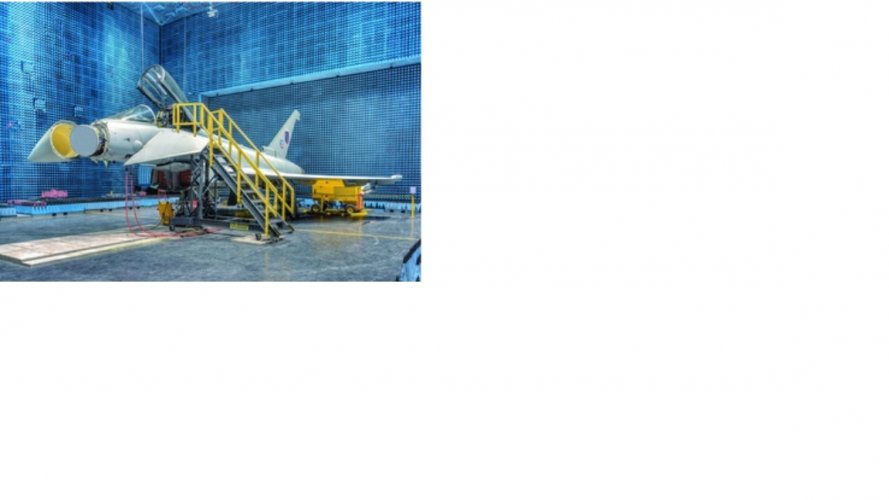 ely providing our opinion on this exceedingly complex but interesting topic. Thanks.
ely providing our opinion on this exceedingly complex but interesting topic. Thanks.F-14ATomcat
ACCESS: Secret
- Joined
- 26 May 2024
- Messages
- 431
- Reaction score
- 750
read well what I am going to say.There's no such thing as an ideal canard. Canards serve multiple functions, with each design optimising for different things. If you don't understand that, you don't understand the basics of aircraft design.
Aircraft are designed upon operational use
Got it?
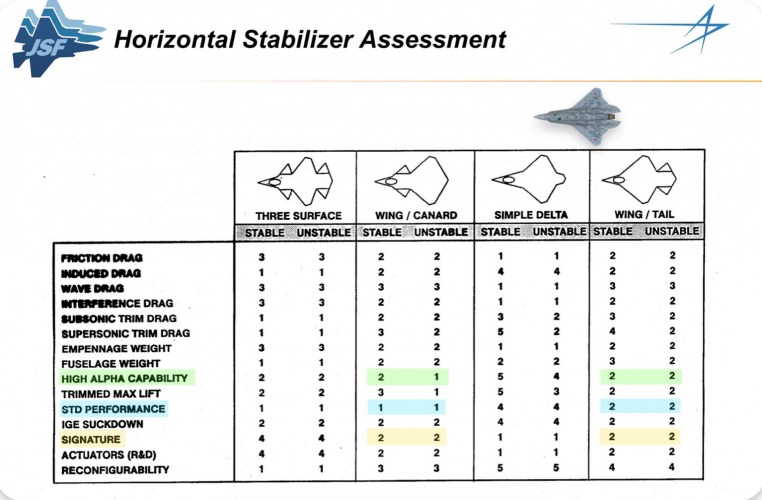
Now study this table.
When you go to signature, simple delta has 1 and 1, so it has the lowest RCS, so what is it saying?
Simple in 2001 when JSF was flown X-32 and YF-23 was better stealth than wing tail and wing canard
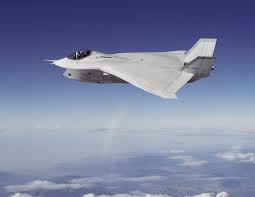
are we still there?
So the question for signature is why Lockheed designed F-35 without canards? see that it says high AoA capability for canard wing 1,1 so it means it has the best AoA capability, now tell me why they designed F-22 and F-35 without canards if the table says in signature is the same canard wing and wing tail but AoA capability is better for canard wing?
the answer will tell you these two pictures
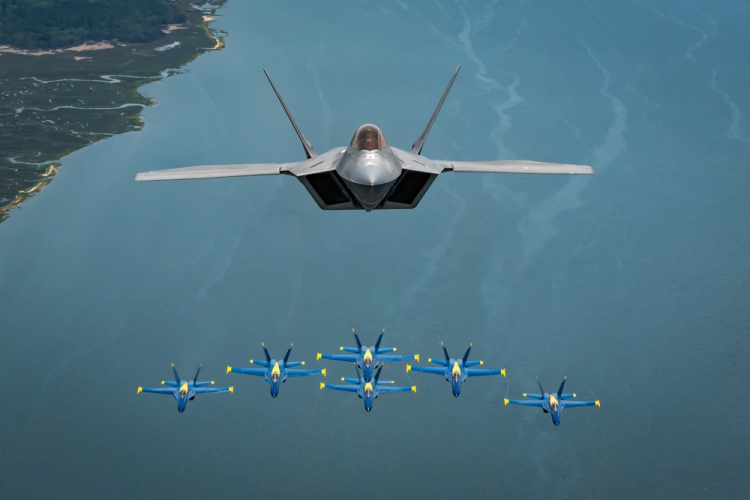
See that in this picture F-22 is hiding its horizontal tail very well, and now look at this
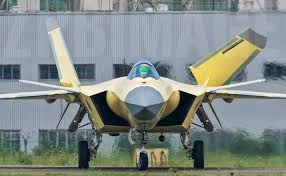
J-20 always has visible the canard from any angle and it has the ventral fin visible, yes from some angles F-22 does hide better the horizontal tail, in fact from some angles F-22 looks tailess even it is not
So if you say canards are stealthier than aft horizontal tails no the answer is not.
But then why they say canard wing and wing tail have the same signature?
well
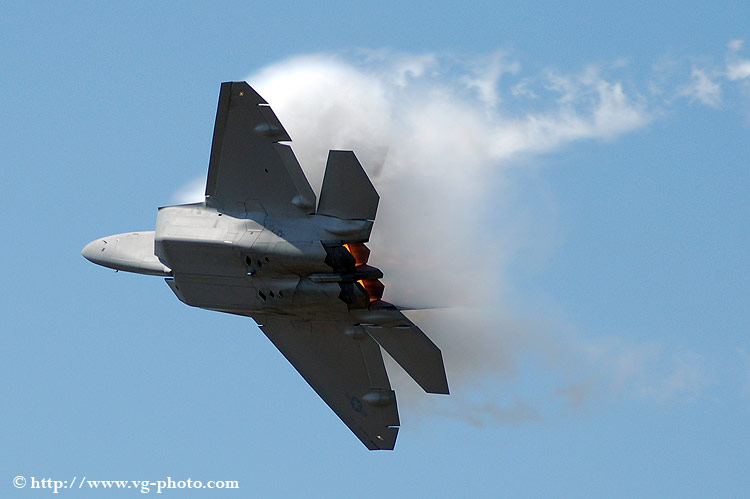
well from some angles the aft horizontal tail is clearly visible on F-22.
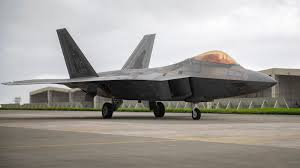
but from others it is not visible but let us remember canards are usually smaller than aft horizontal tails
But you are claiming not ideal canard does exist, but that is not true, canard position gives different results, if you want agility, the best is Rafale/IAI Lavi, for lower drag is X-31 or Eurofighter Typhoon.
That is well known.
Last edited:
F-14ATomcat
ACCESS: Secret
- Joined
- 26 May 2024
- Messages
- 431
- Reaction score
- 750
Did you read the article? did you answer why F-5 has two different types of nose? clearly not then no point in continue chatting, regards, the article says SR-71 has better directional stability with chines than YF-12A, it clearly shows you did not read itYou'll note that those strakes are deployed one at a time and they're designed to create vortices on one side of the aircraft. Deploy them at the same time and they cancel each other out having no effect on yaw. Also they are not oriented in the horizontal plane. You're throwing a lot at the wall but don't understand what you're seeing.
Last edited:
Scott Kenny
ACCESS: USAP
- Joined
- 15 May 2023
- Messages
- 11,628
- Reaction score
- 14,321
Bigger canards are better for stealth, they're closer to the "many multiples of radar wavelength" required for RAM/RAS to work. They also need to deflect less to have the same effect. But bigger canards tend to be slower moving because they're heavier, which gets countered by bigger/more powerful actuators.
IIRC one of the LockMart JAST canard studies ended up with canards so large it was practically a tandem-wing.
IIRC one of the LockMart JAST canard studies ended up with canards so large it was practically a tandem-wing.
F-14ATomcat
ACCESS: Secret
- Joined
- 26 May 2024
- Messages
- 431
- Reaction score
- 750
bigger reflecting surface bigger RCS, what do you think is stealthier a F-35 full size or a 1/144 model made from the same materials?Bigger canards are better for stealth, they're closer to the "many multiples of radar wavelength" required for RAM/RAS to work. They also need to deflect less to have the same effect. But bigger canards tend to be slower moving because they're heavier, which gets countered by bigger/more powerful actuators.
IIRC one of the LockMart JAST canard studies ended up with canards so large it was practically a tandem-wing.
Scott Kenny
ACCESS: USAP
- Joined
- 15 May 2023
- Messages
- 11,628
- Reaction score
- 14,321
Yet the B-2 has a smaller RCS than an F-117 or F-22.bigger reflecting surface bigger RCS, what do you think is stealthier a F-35 full size or a 1/144 model made from the same materials?
Radar absorption works by allowing the radar waves to bounce multiple times inside the radar-absorbing materials or structures. This is most effective when the bounce path is more than 10 times the wavelength being absorbed.
Stealth in general works by controlling which directions the radar reflects to, and concentrating all reflections into the smallest possible number of very narrow directional "spikes".
If a big canard has to deflect less than half a degree to maintain trim in flight, that will have a much smaller effect on the RCS spikes than a small canard that needs to deflect 5 degrees to get the same effect on trim.
Similar threads
-
-
-
-
Photos and analysis of China's J-20 fighter as it nears first flight
- Started by Foxglove
- Replies: 522
-

